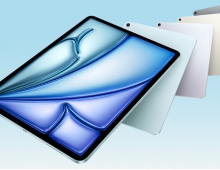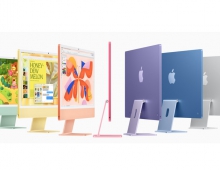
Apple is trying to patent the interface for its iPod music player
In its patent application 20040055446, published on Thursday, Apple describes a graphical user interface "and methods of use thereof in a multimedia player". The patent application refers to a hierarchically ordered graphical user interface and lists Apple chief executive Steve Jobs, Jeffrey L. Robbin and Timothy Wasko as inventors.
Jeff Robbin was the primary author of SoundJam, the MP3 player which Apple bought the rights to in early 2000 as it sought to make up for lost ground in digital music after it underestimated demand for CD-RW drives. Robbin moved to Apple with the acquisition, where he later took a lead role on iTunes. Tim Wasko worked with Steve Jobs at NeXT before moving back to Apple after Jobs took up the post of iCEO (and later CEO).
This is not the first time Apple has tried to stop others from copying its interfaces.
In the late 1980s, Apple agreed to license parts of the user interface that appeared in the Lisa and Macintosh computers to Microsoft, which was then working on Windows 1.0. But as Microsoft added more features in Windows 2.0 and later in 3.0, Apple in 1988 filed a copyright infringement lawsuit against Microsoft and HP (which at the time was working on an Apple-like skin for Windows called NewWave) to stop them using elements that it used in its Lisa and Macintosh platforms. Apple lost all its claims, except those that related to the trash can icon and file folder icons in HP's long-since abandoned NewWave. An appeal by Apple to the US Supreme Court was later denied.
Critics at the time suggested that Apple was attempting to gain all intellectual property rights over the desktop metaphor for computer interfaces. That case was further complicated when Xerox, which is widely held to have invented the graphical user interface, filed its own lawsuit against Apple saying that it held all copyrights over graphical user interfaces.
Apple appears to have learnt from its mistake in relying on copyright law, and is now turning to patent law to protect its user interfaces. "Patents offer stronger protection than copyright," said Struan Robertson, associate solicitor at law firm Masons. "If what you have done can covered by a patent you are well advised to get the patent. But Apple will still have copyright rights over the interface and so could still assert those in any action."
This is not the first time Apple has tried to stop others from copying its interfaces.
In the late 1980s, Apple agreed to license parts of the user interface that appeared in the Lisa and Macintosh computers to Microsoft, which was then working on Windows 1.0. But as Microsoft added more features in Windows 2.0 and later in 3.0, Apple in 1988 filed a copyright infringement lawsuit against Microsoft and HP (which at the time was working on an Apple-like skin for Windows called NewWave) to stop them using elements that it used in its Lisa and Macintosh platforms. Apple lost all its claims, except those that related to the trash can icon and file folder icons in HP's long-since abandoned NewWave. An appeal by Apple to the US Supreme Court was later denied.
Critics at the time suggested that Apple was attempting to gain all intellectual property rights over the desktop metaphor for computer interfaces. That case was further complicated when Xerox, which is widely held to have invented the graphical user interface, filed its own lawsuit against Apple saying that it held all copyrights over graphical user interfaces.
Apple appears to have learnt from its mistake in relying on copyright law, and is now turning to patent law to protect its user interfaces. "Patents offer stronger protection than copyright," said Struan Robertson, associate solicitor at law firm Masons. "If what you have done can covered by a patent you are well advised to get the patent. But Apple will still have copyright rights over the interface and so could still assert those in any action."





















